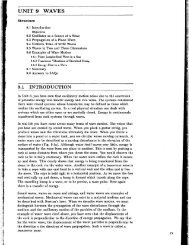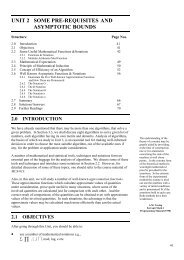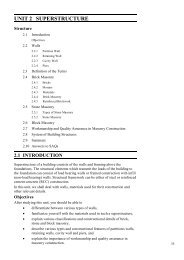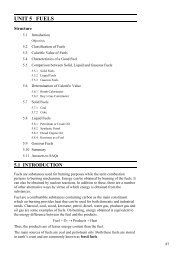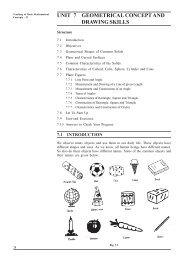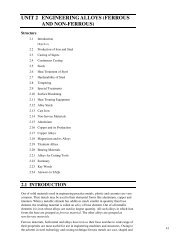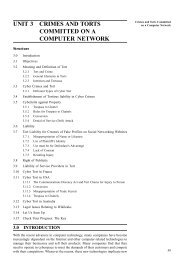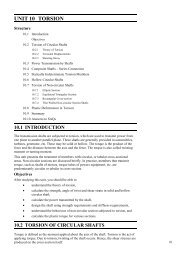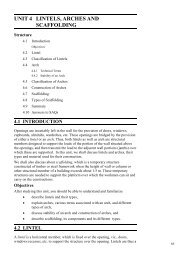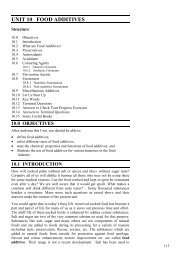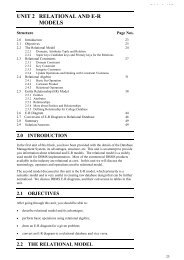unit 1 differential calculus - IGNOU
unit 1 differential calculus - IGNOU
unit 1 differential calculus - IGNOU
You also want an ePaper? Increase the reach of your titles
YUMPU automatically turns print PDFs into web optimized ePapers that Google loves.
Solution<br />
Look at Tables 1.1 and 1.2. These give values of f (x) as x gets closer and<br />
closer at 2 through values less than 2 and through values greater than 2,<br />
respectively.<br />
Table 1.1<br />
x 1 1.5 1.9 1.99 1.999<br />
f (x) 5 5.5 5.90 5.99 5.999<br />
Table 1.2<br />
x 3 2.5 2.1 2.01 2.001<br />
f (x) 7 6.5 6.1 6.01 6.001<br />
From the above tables, it is clear that as x approaches 2, f (x) approaches 6.<br />
In fact, the nearer x is chosen to 2, the closer f (x) will be to 6. Thus, 6 is<br />
limit of x + 4 as x approaches 2, that is, ( x + 4)<br />
= 6.<br />
lim<br />
x → 2<br />
In the above example, the value of ( + 4)<br />
x coincides with the value<br />
x + 4 when x = 2, that is,<br />
lim<br />
x →2<br />
lim<br />
x →2<br />
f ( x)<br />
= f<br />
Numbers x near 2 fall into two natural categories; those which are < 2, that<br />
is, those that lie to the left of 2, and those which are > 2, that is, those which<br />
lie to the right of 2.<br />
We write<br />
lim<br />
−<br />
x →2<br />
f ( x)<br />
= 6<br />
( 2).<br />
to indicate that as x approaches 2 from the left, f (x) approaches 6.<br />
We shall describe this limit as the left-hand limit of f (x) as x approaches (or<br />
tends to) 2.<br />
Similarly,<br />
lim<br />
+<br />
x →2<br />
f ( x)<br />
= 6<br />
indicates that as x tends to 2 from the right, f (x) approaches 6.<br />
We shall call this limit as the right-handed limit of f (x) as x approaches 2.<br />
The left and right-hand limits are called one-sided limits.<br />
It is clear now that<br />
if and only if, both<br />
lim<br />
x →2<br />
lim<br />
−<br />
x →2<br />
f ( x)<br />
= 6<br />
f ( x)<br />
= 6<br />
lim<br />
x →2<br />
and<br />
lim<br />
+<br />
x →2<br />
f ( x)<br />
= 6 .<br />
In the above example, the value of ( + 4)<br />
x coincides with the value of<br />
x + 4 when x = 2, that is<br />
lim<br />
x →2<br />
f ( x)<br />
= f<br />
( 2).<br />
Differential Calculus<br />
25




